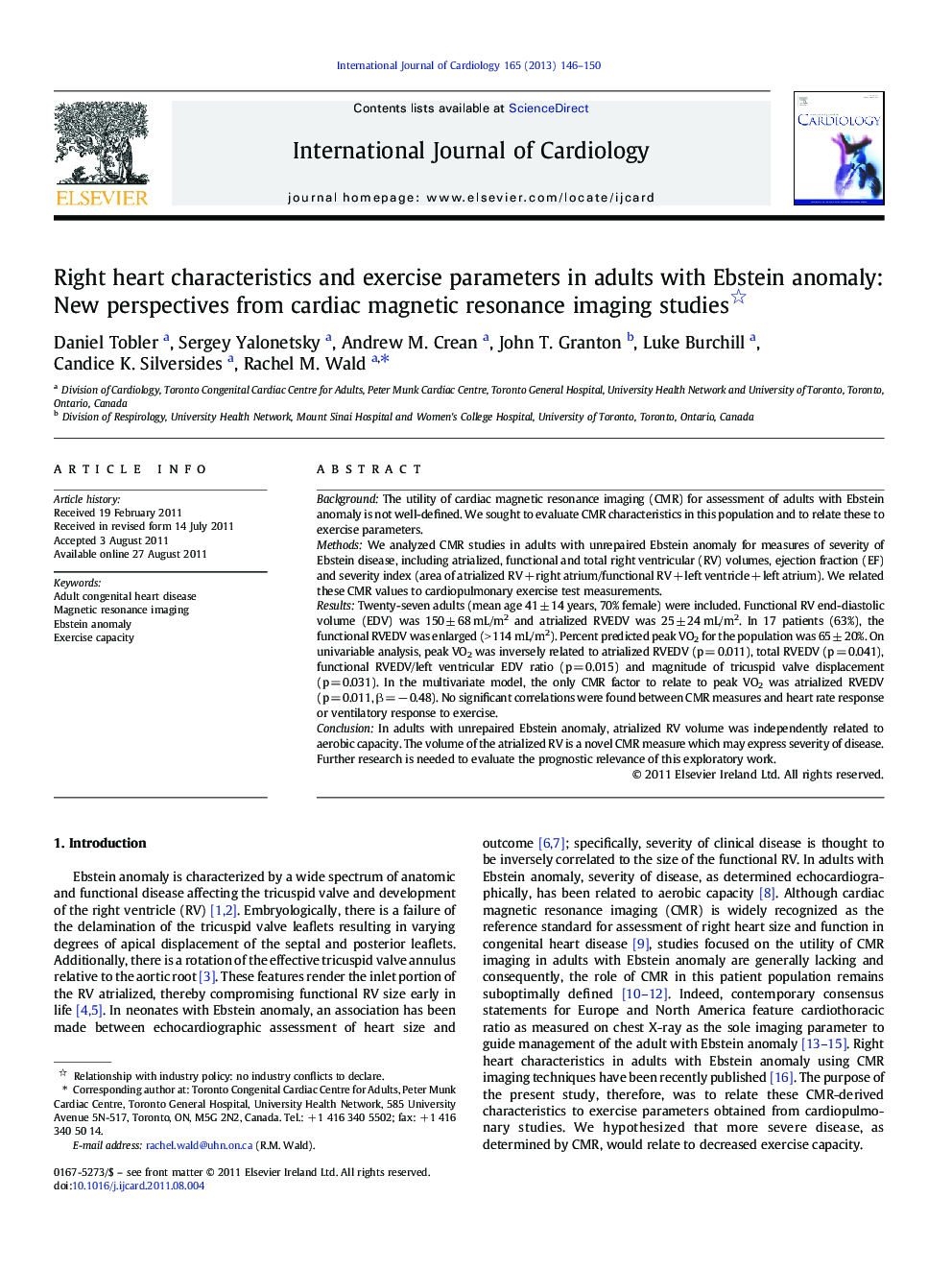| Article ID | Journal | Published Year | Pages | File Type |
|---|---|---|---|---|
| 5977022 | International Journal of Cardiology | 2013 | 5 Pages |
BackgroundThe utility of cardiac magnetic resonance imaging (CMR) for assessment of adults with Ebstein anomaly is not well-defined. We sought to evaluate CMR characteristics in this population and to relate these to exercise parameters.MethodsWe analyzed CMR studies in adults with unrepaired Ebstein anomaly for measures of severity of Ebstein disease, including atrialized, functional and total right ventricular (RV) volumes, ejection fraction (EF) and severity index (area of atrialized RV + right atrium/functional RV + left ventricle + left atrium). We related these CMR values to cardiopulmonary exercise test measurements.ResultsTwenty-seven adults (mean age 41 ± 14 years, 70% female) were included. Functional RV end-diastolic volume (EDV) was 150 ± 68 mL/m2 and atrialized RVEDV was 25 ± 24 mL/m2. In 17 patients (63%), the functional RVEDV was enlarged (> 114 mL/m2). Percent predicted peak VO2 for the population was 65 ± 20%. On univariable analysis, peak VO2 was inversely related to atrialized RVEDV (p = 0.011), total RVEDV (p = 0.041), functional RVEDV/left ventricular EDV ratio (p = 0.015) and magnitude of tricuspid valve displacement (p = 0.031). In the multivariate model, the only CMR factor to relate to peak VO2 was atrialized RVEDV (p = 0.011, β = â 0.48). No significant correlations were found between CMR measures and heart rate response or ventilatory response to exercise.ConclusionIn adults with unrepaired Ebstein anomaly, atrialized RV volume was independently related to aerobic capacity. The volume of the atrialized RV is a novel CMR measure which may express severity of disease. Further research is needed to evaluate the prognostic relevance of this exploratory work.
